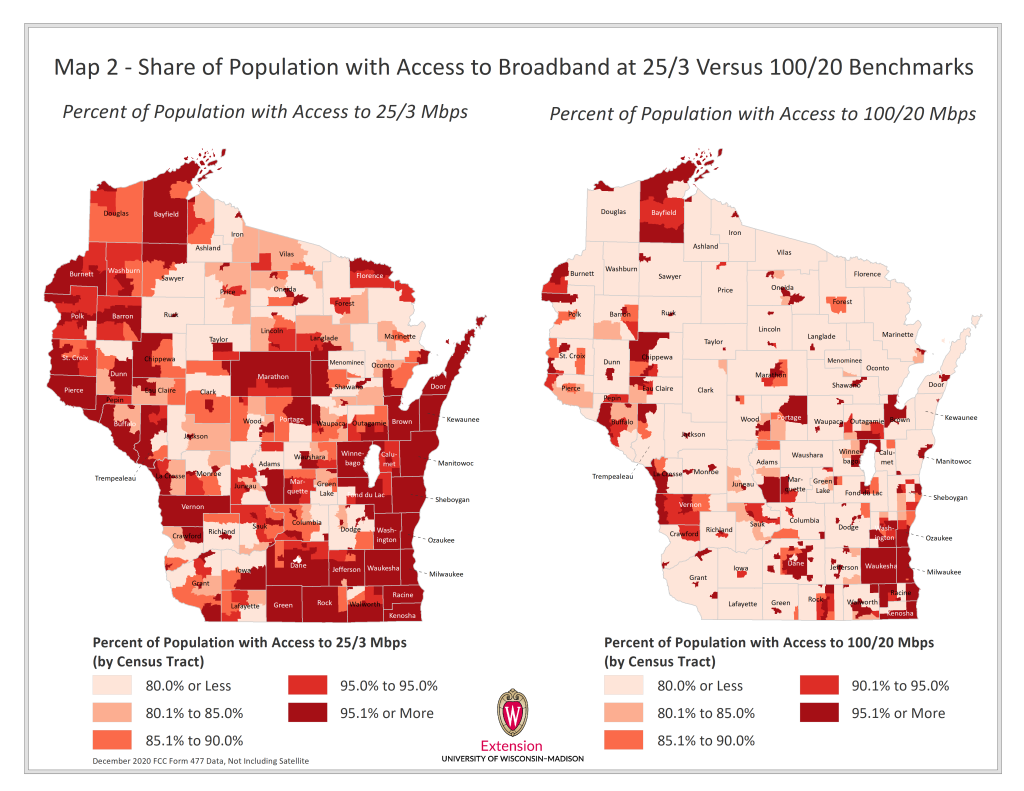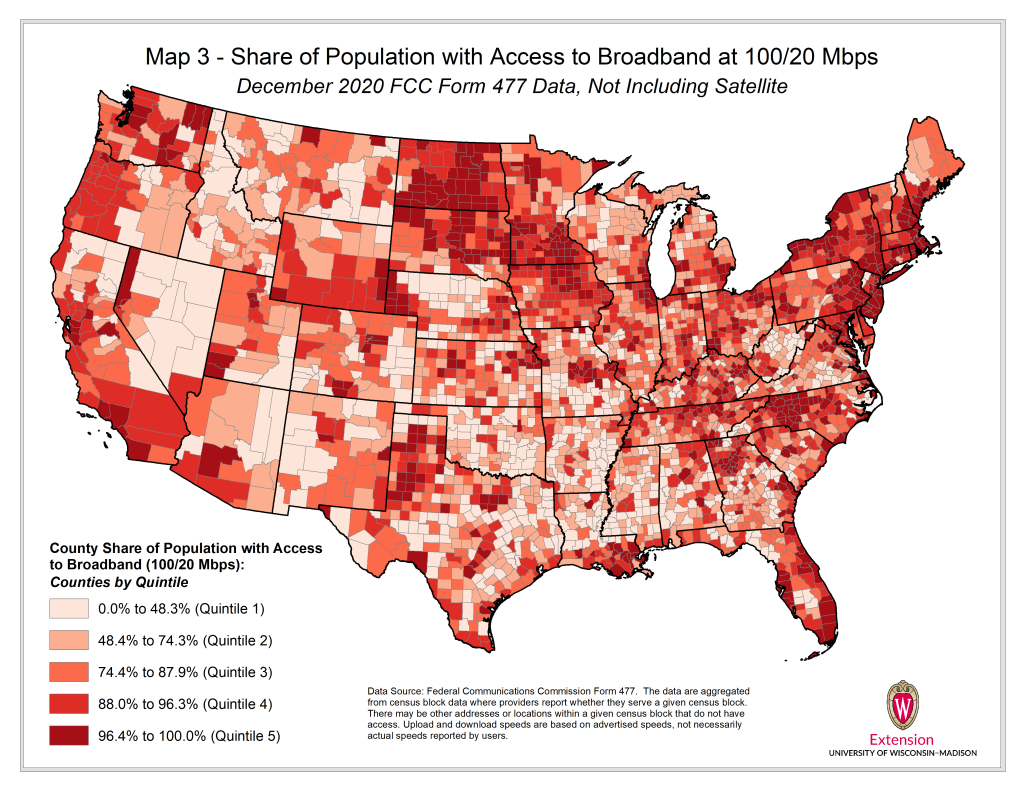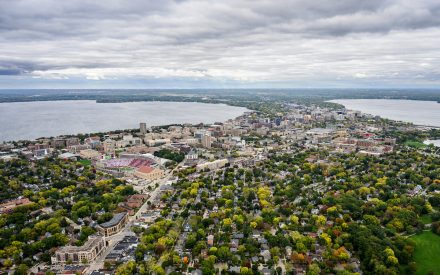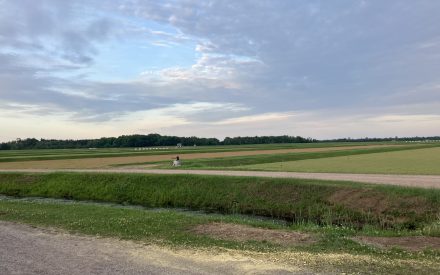(Image Source: Compare Fibre / Unsplash)
Wisconsin IDEA
Insight • Data • Economics • Analysis
Only 68.1 Percent of Nonmetro Populations have Access to 100/20 Mbps
The Federal Communications Commission’s (FCC) definition of broadband internet service has evolved over the past several decades. The original definition in 1996 was symmetrical, with 200 Kbps as the benchmark for both minimum download and upload speeds (200/200 Kbps). In 2010, the FCC changed the definition to an asymmetrical standard of 4/1 Mbps minimum download and upload speeds and updated the definition yet again in 2015 to the current classification of 25/3 Mbps. In acknowledging how internet usage continues to evolve, particularly with the impacts of the pandemic, there have been assertions from elected officials, technology organizations and consumer advocates that the 25/3 Mbps definition is insufficient and needs to be revised. Recently, FCC Chair Jessica Rosenworcel proposed that broadband should be defined by minimum download/upload speeds of 100/20 Mbps. While it is unknown whether these speeds will become official FCC thresholds, the 100/20 Mbps benchmarks already are being applied in some settings including the Broadband Access, Equity and Deployment (BEAD) grant program, where a lack of access to 100/20 Mbps is used to define an “underserved” location.

One perspective on the share of Wisconsin residents that have access to broadband under the current 25/3 Mbps definition versus the proposed 100/20 Mbps standard comes from the FCC’s Form 477 data. Form 477 is submitted by internet service providers (ISPs) to identify census blocks where they provide service in addition to information on the download and upload speeds they offer. Using data from December 2020, approximately 97% of Wisconsin residents have access to 25/3 Mbps compared to 86% with access to 100/20 Mbps. Note that these figures likely overstate access as the Form 477 data have several deficiencies. Specifically, only one housing unit in a census block needs to be served by an ISP for the census block to be considered fully served. Furthermore, download and upload speeds are those that are advertised and are not necessarily what a household receives. As a result, there are some households that appear to have broadband available according to a specific benchmark, but indeed do not have access.

Access to 25/3 and 100/20 Mbps service varies across Wisconsin. When depicted at basic census block geographies (Map 1) and at an aggregated census tract level (Map 2), disparities in broadband availability become apparent in many regions of the state. Not surprisingly, higher levels of 25/3 Mbps availability are found in metropolitan statistical areas, where 98.8% of residents have access compared to 91.5% of residents in nonmetro areas. A much larger difference in 100/20 Mbps availability is found between metro and nonmetro areas, where 92.1% of metro residents have access to 100/20 Mbps compared to just 68.1% of the nonmetro population. As many census blocks in metro areas are not urban in nature and are instead considered to be rural, the distribution of access in urbanized areas and rural geographies provides another perspective. Almost 100 percent (99.8%) of residents in urbanized areas have access to 25/3 Mbps, while 99.4% have access to 100/20 Mbps. In rural areas, 90.4% of the population has access to 25/3 Mbps but just 55.5% has 100/20 Mbps availability.

As rural regions try to attract and retain residents, particularly those who can work remotely, factors such as low housing costs, the presence of recreational assets, and high quality of life measures become increasingly important. Broadband affordability and access above the current 25/3 Mbps standard may also become a competitive advantage for some rural areas. Nationally, access to 100/20 Mbps varies considerably (Map 3) and, as in Wisconsin, urban-rural disparities are found in many other states. However, there are some rural areas that already have high levels of 100/20 availability such as portions of Minnesota, North Dakota and Iowa. Whether or not access to higher speed broadband translates into population growth in these regions remains to be seen. The role of broadband in attracting remote workers will be further explored in an upcoming WIndicator.















